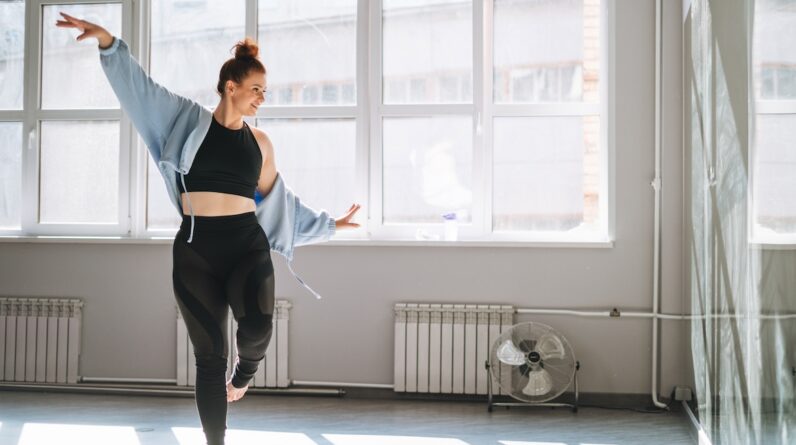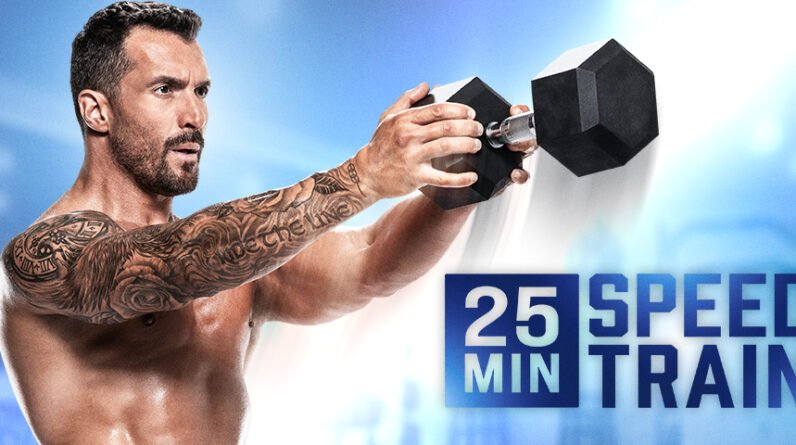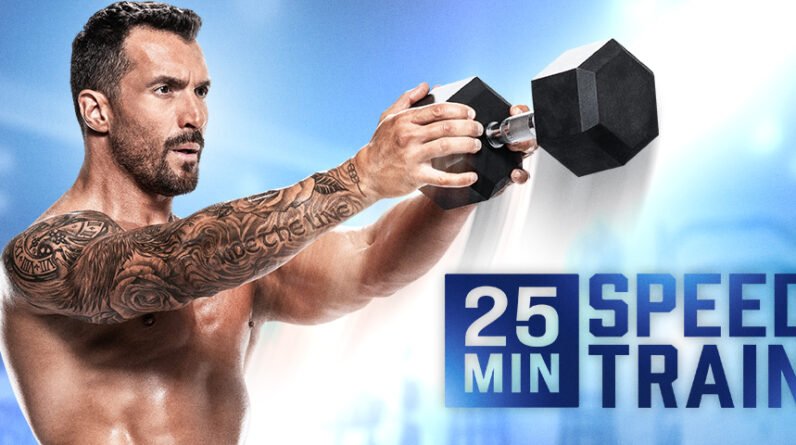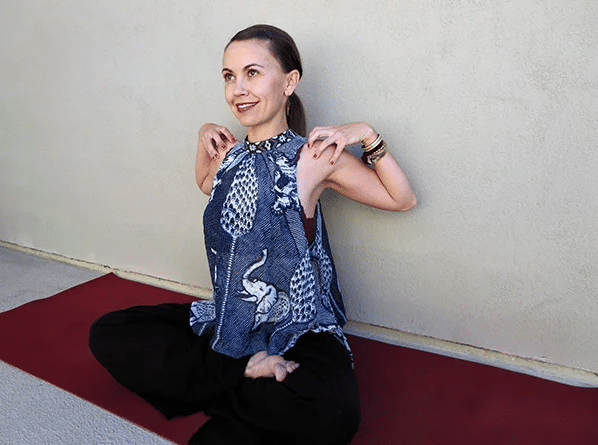
If you know me, you will know three things: I’m overly ambitious, I’m incredibly stubborn, and the combination of the first two gets me in trouble more than I care to admit.
So when I got the chance to run the 2023 Boston Marathon with only 10 weeks to train, I jumped at it—despite the fact that I’d only been clocking 10- to 15-mile weeks for about the last two years.
Marathon day came, and I managed to finish despite the nagging pain of a returning knee injury from high school—just as stubborn as I—that popped up right after the halfway mark. At the time, I didn’t think much of it. But after a couple months went by and I still wasn’t able to run consistently, I began considering other means of exercising.
Another fact about me is that I wasn’t actually an athlete in high school—I was a theater kid. Which meant my activities included rehearsals, voice lessons, and dance.
While I took a hiatus from the theater world due to the COVID-19 pandemic and ultimately accepting a full-time job, moving to freelance this past year gave me the time and opportunity to start pursuing my passion for performing once again. After getting thrown into summer stock theater last year and having to learn a show’s worth of choreography in about three days, I decided getting back in a dance class might be worth my time.
Since January 2024, I’ve been taking jazz and ballet classes, twice a week, which ends up being about four hours of dance in total. To my surprise, I’ve found myself feeling healthier, looser, and better about my body than I have in years, even though I haven’t stepped foot into a gym since the summer.
So I began to wonder: Have I simply hit a second wind as I enter my 27th year? Or could there be some benefits of dancing I’d never considered?
In This Article
-
01
Benefits
-
02
How To Get Started
The benefits of dancing that’ll convince you to seek out a class—or bust a move in your room
Obviously I’ve seen some benefits myself, but could dance be a net positive for those looking for a new workout? We’ve seen a rise in dance-based workouts like Zumba or barre class, but what about ballet, salsa, tap, modern, or jazz?
I reached out to Danielle Schulz, dance teacher and dancer for the Metropolitan Opera and founder of The Triangle Sessions, to get some insight on why dancing may be the workout you’ve been waiting for.
One of the biggest benefits of any activity is improving fitness, but as it turns out, dance is surprisingly well-rounded. Check out the many benefits of dancing below.
“The best kind of dance is the one you enjoy—it’s the one that gets your endorphins going, that gets you excited week after week, the one that makes you feel alive.” —Danielle Schulz, dance teacher and dancer
1. It boosts cardio fitness
Dance gets your blood flowing. Whether you’re doing jumps and leaps, high kicks, or other fast movements, dance classes are great for raising your heart rate.
Most classes will also have periods focused more on slow and controlled movements as well as quick and powerful ones. This gives it almost a HIIT-like effect because your heart rate will spike and lower during the class, allowing you to burn more calories without feeling like you’re working too hard, according to Schulz.
2. It builds strength
No matter which type of dance you are doing, the activity requires a deceptive amount of strength and control. While you aren’t lifting weights, you are lifting and moving your body. This is great for improving strength in your entire body, but particularly your legs, back, and core, Schulz says.
Some types of dance—specifically ballet—are dependent on a many controlled movements. Moving in a slow and specific manner is more difficult than you think and is great for improving strength in a low-impact way, according to Schulz.
3. It improves balance
Whether you’re turning, kicking, or practicing your arabesque, balance is key to any dance style. Not only will dance classes include moves that require balance in the combinations, but most will also have balance exercises in the warm-ups.
This is not only great for improving your balance in class, but it also helps to improve your overall balance in real life, making it an unlikely functional fitness activity, according to Schulz.
4. It’s good for your mental health
Working out in any capacity has been shown to have not only physical benefits, but mental benefits as well. These include a decrease anxiety, depression and negative mood, and an increase in self esteem and cognitive function, per a notable 2006 research article in Primary Care Companion to The Journal of Clinical Psychiatry.
But taking dance classes offer even more of a positive effect than heading to the gym for a quick workout.
Not only do you have a sense of accomplishment from moving your body and working out, but you’re also actively learning a skill. You can watch yourself grow over time, so you’re motivated by more than just working out for the sake of working out.
Dance classes also allow you to express yourself through artistry, according to Schulz. While dance is a very physical activity that does require a level of fitness, particularly in advanced levels, it’s also, at its core, art. And while there is certainly a correct way to dance as far as technique goes, artistry and interpretation are unique to the individual, so it can be a very cathartic and freeing way to express your emotions through movement, she says.
In my personal experience, I’ve also noticed that dance classes have improved my mind-body connection and memory. I’ve always struggled somewhat with coordination in regards to direction—especially when looking in the mirror—and diving back into class, especially as an adult, has made me better aware of my surroundings and improved my proprioception (aka where your body is in space and time).
I’ve also seen dramatic improvement in my ability to retain choreography since starting classes, so it’s been a challenge for my brain as well as body.
5. It provides a sense of community
Unless you’re taking private lessons, dance classes are a social activity. It’s a great way to meet new people, build community, and support others in a similar goal. Since many adult dance classes are aimed more at beginners, classes are usually more relaxed and inclusive than you may expect. Though teachers will push you to improve your technique, they are generally supportive, judgment-free zones.
6. It’s just plain fun
Most of all, dance classes are fun. In my own experience, I didn’t realize how hard I was working because I was so focused on improving my skill—and frankly just enjoying myself. (This is coming from someone who thinks she’s hit a mile about two minutes into a run.) And as long as you’re having fun, there’s a good chance you’ll be coming back for more.
“I believe the best workout is the one you’ll actually do,” Schulz says. “The same goes for dance. The best kind of dance is the one you enjoy—it’s the one that gets your endorphins going, that gets you excited week after week, the one that makes you feel alive.”
It’s pretty hard to get bored with dance because there are so many styles as well as ways to advance your technique and skill, Schulz says. You may find that various styles resonate differently at certain points in your life, so it’s okay—and encouraged!—to switch things up.
How to get started dancing if you’ve never done it before
Starting anything new can be scary, but there’s admittedly something particularly vulnerable about pursuing something as an adult especially if you don’t have previous experience. The good news, however, is that you’re not alone. Adult dance classes have sprung up everywhere in recent years with levels ranging from absolute beginner to advanced.
“If you’re a complete novice, I recommend trying various dance forms—like ballet, hip hop, tap, ballroom, etc.—and finding a style that resonates with you,” Schulz says. “It may just take a bit of trial and error to find what’s best for you. Being a beginner can be humbling, but once you build a basic understanding of a technique-based dance class, it only becomes easier and more enjoyable with time.”
Schulz also points out there’s no age limit when it comes to starting to dance.
“My 3-year-old son just started ballet to help improve coordination, one’s connection to music, and develop spatial awareness in a group setting,” she says. “On the other end of the spectrum, my 83-year-old father-in-law is a devoted amateur ballroom dancer when he’s not practicing medicine. He finds great joy in the art form, the community, and the spirit of competition. It keeps his brain sharp and spirit young.”
Not sure where to find classes? Look up your local dance studios, community centers, and community colleges. Chances are, you’ll be able to find a selection of classes in your area. If you’re more on the shy side, there are also tons of dance classes that you can take virtually, as well as free classes and tutorials on YouTube.
Well+Good articles reference scientific, reliable, recent, robust studies to back up the information we share. You can trust us along your wellness journey.
- Sharma A, Madaan V, Petty FD. Exercise for mental health. Prim Care Companion J Clin Psychiatry. 2006;8(2):106. doi: 10.4088/pcc.v08n0208a. PMID: 16862239; PMCID: PMC1470658.







